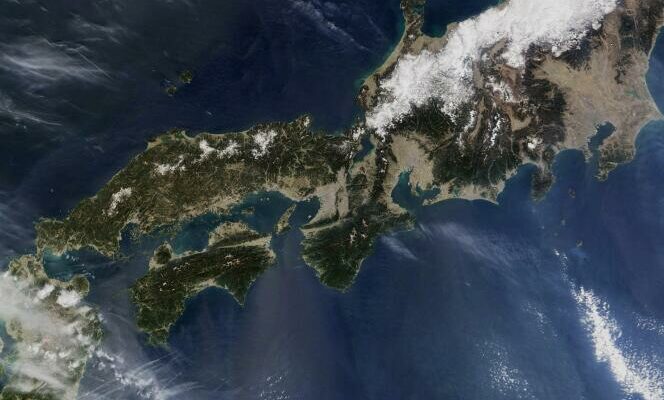“Geopolitics of Japan. The island empire”, by Philippe Pelletier, PUF, “Géopolitiques”, 252 p., €14, digital €10.
The subject of media craze, geopolitics, a discipline dealing with the interaction between geography and international relations, often tends to neglect the history and memory of peoples, to focus solely on the balance of power and their issues. immediate, which obscure their genesis. The merit of Philippe Pelletier, in Geopolitics of Japanis to place contemporary Japan in its context, both geographical (its insularity) and historical, which allows the geographer, professor emeritus at Lumière-Lyon-II University, to shed new light on its contemporary territorial disputes and its system of political power.
Since the mid-19th centurye century, he points out, Japan was the scene of three major historical events for itself and for the rest of the world. First the emergence of a power “non-white” which, through a social and political transformation (the Meiji Revolution, begun in 1868) aimed at keeping Western imperialism in check, would defeat a Western power half a century later (Russia, in 1905). Then this country was the victim of the first atomic bombings, in Hiroshima and Nagasaki (August 1945), and finally the nuclear disaster of Fukushima (March 2011), revealing deficiencies in its management of civil nuclear power.
Today, Japan, the third largest economy in the world, finds itself in an uncomfortable situation: neighboring China whose civilization has permeated its culture – to the point that its name, Nihon (“origin of the sun”), is forged in reference to the Middle Kingdom – and having become its first economic partner, it is militarily and diplomatically anchored to the United States in an asymmetrical relationship of dependence which takes it to the heart of the arm railway between Washington and Beijing.
“Internal borders”
The sea, both a border space and a space of exchange, in which sovereignty is less easily defined than on land, is at the heart of Japanese geopolitics. The Archipelago, which, in addition to its four main islands and some four hundred others, also inhabited, as well as several thousand islets and reefs, has an “exclusive economic zone” covering nearly 5 million square kilometers. It is in border disputes with China and Taiwan (Senkaku/Diaoyutai Islands), South Korea (Takeshima/Dokto Island) and Russia (Kurile Islands).
You have 35% of this article left to read. The rest is reserved for subscribers.
